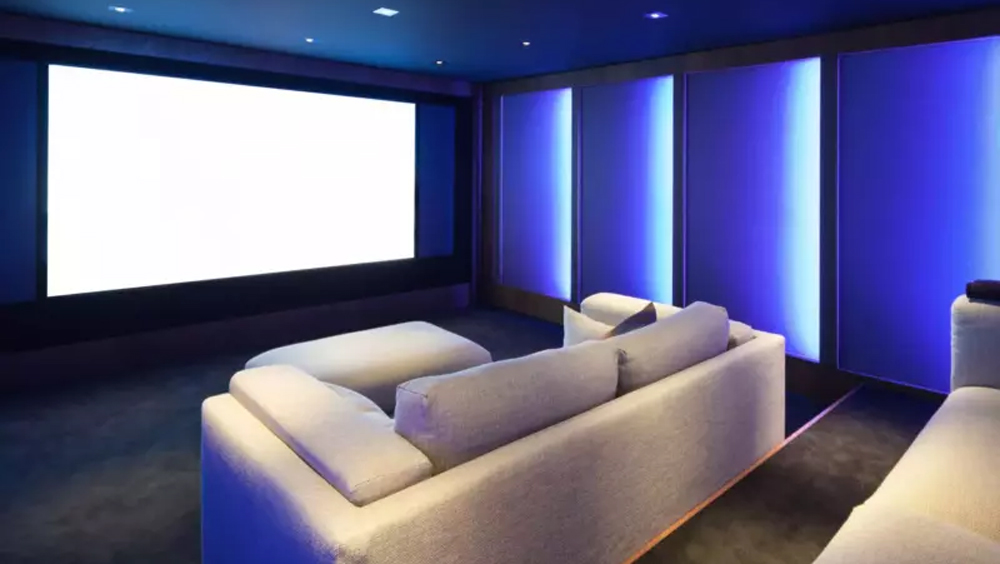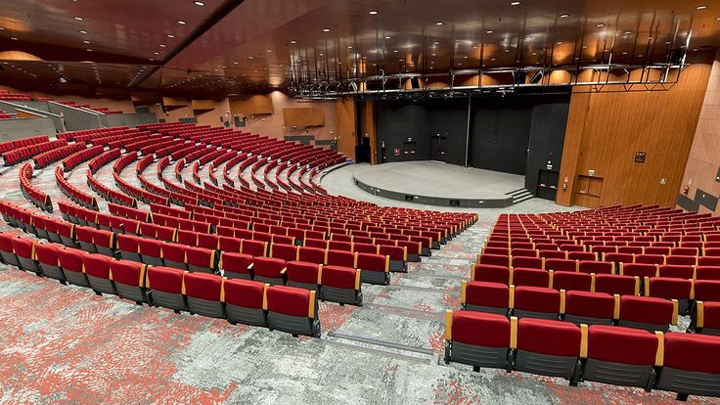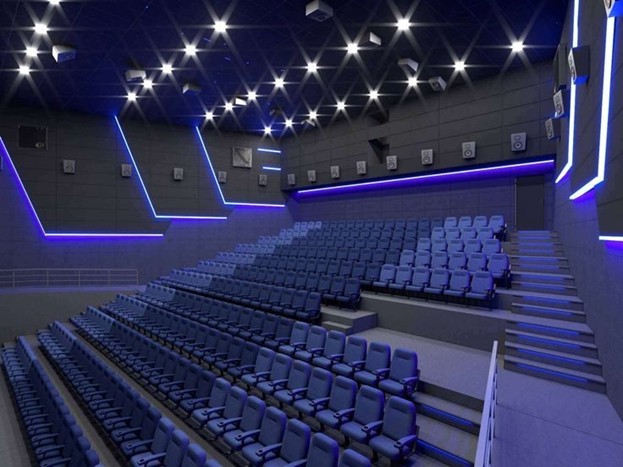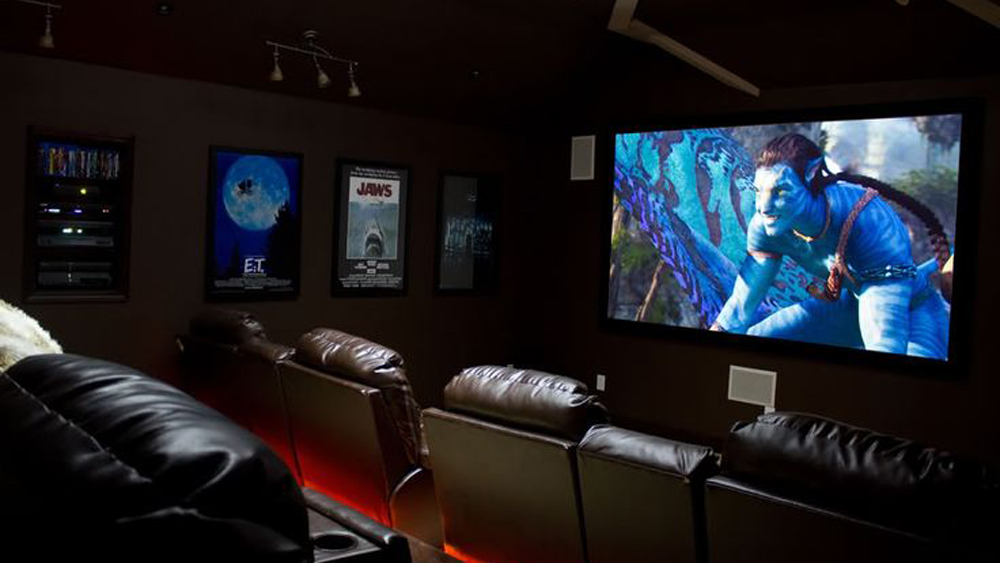Creating a dedicated home movie theater room is a dream for many homeowners who want to enjoy an immersive cinematic experience in the comfort of their own homes. The key to achieving this dream lies in meticulous planning and attention to detail, ensuring that every aspect of the home theater design meets your needs and preferences. In this comprehensive guide, we will explore essential considerations such as home theater room color, home theater room wallpaper, home cinema dimensions, home theater seat, and the overall design of home theater. By focusing on these elements, you can transform any space into a perfect cinema room.
Home Theater Design Basics
The first step in designing a perfect home movie theater room is to understand the basics of home theater design. This involves selecting the right space, determining the layout, and choosing the appropriate equipment. A successful home theater design should create an environment that mimics the experience of a commercial cinema but with the added comfort and convenience of being at home.
When planning your home theater design, consider the size and shape of the room. A rectangular room is ideal as it allows for better sound distribution and screen placement. The room should be free from windows or have heavy curtains to block out light. Proper ventilation and climate control are also essential to maintain comfort during extended viewing sessions.
Home Theater Room Color
One of the most important factors in home theater design is selecting the right home theater room color. The color of the room can significantly impact the viewing experience. Darker colors are generally preferred as they reduce reflections and help to create a more immersive experience. Colors like deep navy, charcoal, or even black are popular choices for home theater room color. These shades help in absorbing light, thus minimizing glare on the screen.
Using darker colors on the walls, ceiling, and even the floor can enhance the overall ambiance of the cinema room. Consider using matte finishes as they are less reflective compared to glossy paints. Additionally, incorporating accent colors through furniture or decor can add a touch of personality without distracting from the main viewing experience.
Home Theater Room Wallpaper
Another aspect to consider in home theater design is the use of home theater room wallpaper. Wallpaper can add texture and depth to the room, enhancing the overall aesthetic. Acoustic wallpapers are a great choice as they can improve sound quality by reducing echo and reverberation. Additionally, wallpaper with subtle patterns can add visual interest without being distracting.
When choosing home theater room wallpaper, look for designs that complement the home theater room color. Darker shades with intricate patterns can create a luxurious feel, while lighter tones with minimalistic designs can make the space feel more modern. Ensure that the wallpaper material is durable and easy to clean, as maintaining the aesthetic quality of the room is essential for long-term enjoyment.
Home Cinema Dimensions
Getting the home cinema dimensions right is crucial for a successful home theater design. The size of the room will determine the type and size of the screen, the number of seats, and the layout of the audio equipment. Ideally, a rectangular room with dimensions that allow for at least 10-12 feet of viewing distance from the screen is preferred. This ensures that viewers can enjoy a large screen without experiencing discomfort or strain.
In addition to the viewing distance, consider the ceiling height when planning your home theater design. A higher ceiling can enhance the acoustics and provide more flexibility in speaker placement. Ensure that there is adequate space for comfortable seating arrangements, allowing for unobstructed views and easy movement within the cinema room.
Design of Home Theater
The design of home theater goes beyond just aesthetics; it encompasses the layout, seating arrangement, acoustic treatment, and lighting. When planning the layout, consider the placement of the screen, speakers, and seating to ensure optimal viewing and listening experiences. Reclining seats with ample legroom can enhance comfort, while staggered seating arrangements can provide better sightlines for all viewers.
Acoustic treatment is another critical element in home theater design. Installing sound-absorbing panels, carpeting, and heavy curtains can significantly improve sound quality by reducing echoes and outside noise. Proper insulation and soundproofing techniques are also essential to prevent sound leakage and ensure that your home theater room remains a private entertainment sanctuary.
Incorporate advanced audio-visual technology to elevate your home theater design. High-definition projectors, surround sound systems, and acoustic panels can significantly enhance the viewing experience. Invest in high-quality cables and connectors to ensure optimal signal transmission and reduce potential interference. Additionally, consider integrating smart home systems that allow you to control lighting, sound, and screen settings with ease.
Lighting in Home Theater Design
Lighting plays a crucial role in home theater design. The goal is to create a dark environment that enhances the picture quality without causing eye strain. Dimmable LED lights, wall sconces, and recessed lighting are excellent choices for creating a cinematic ambiance. Additionally, incorporating smart lighting systems allows you to control the lighting levels effortlessly, adding to the overall convenience and sophistication of the home theater room.
When designing the lighting scheme, ensure that the lights are positioned in a way that minimizes reflections on the screen. Use indirect lighting to create a soft glow that enhances the ambiance without being intrusive. Installing LED strips along the ceiling or floor can add a modern touch and provide subtle illumination during movie screenings.
Seating Arrangement
The seating arrangement is a vital aspect of home theater design. Comfortable seating can make or break the viewing experience. Consider investing in high-quality recliners or theater-style seats that offer ample support and cushioning. Arrange the seats in rows, with each row slightly elevated to provide an unobstructed view of the screen.
Ensure that there is enough space between rows to allow for easy movement and legroom. Adding cup holders and storage compartments to the seats can enhance convenience and reduce clutter. Consider incorporating a mix of seating options, such as loveseats or bean bags, to cater to different preferences and create a cozy, inviting atmosphere.
Acoustic Treatment
Achieving optimal sound quality is a cornerstone of effective home theater design. Acoustic treatment involves managing the sound within the room to ensure clarity and balance. Use acoustic panels, bass traps, and diffusers to control sound reflections and prevent echoes. These treatments can significantly enhance the audio experience, allowing you to hear dialogue, music, and sound effects with greater clarity and precision.
Carpeting the floor and using heavy drapes can further improve the acoustics by absorbing sound waves. Consider placing area rugs or carpeting throughout the room to reduce sound reflections and create a warmer, more inviting atmosphere. Additionally, installing soundproof doors and windows can help isolate the cinema room from external noise, ensuring an uninterrupted viewing experience.
Additional Features
To create a truly immersive home theater experience, consider adding additional features that enhance comfort and convenience. A mini-bar or snack station can provide easy access to refreshments during movie nights. Incorporate storage solutions for media equipment, DVDs, and Blu-rays to keep the room organized and clutter-free.
Consider adding a control center that allows you to manage all aspects of the home theater design from a single interface. This can include controlling the audio-visual equipment, adjusting the lighting, and even managing the climate control system. Smart home integration can streamline the operation of your home theater, making it easy to customize the environment to suit your preferences.
Final Thoughts
Designing the perfect home movie theater room requires a careful balance of aesthetics, functionality, and comfort. By paying attention to home theater room color, home theater room wallpaper, home cinema dimensions, and the overall design of the home theater, you can create a space that offers an unparalleled viewing experience. Whether you are a movie buff or just enjoy occasional film nights with family and friends, a well-designed home theater room can elevate your entertainment experience to new heights.
In conclusion, home theater design is an art that combines technical know-how with creative vision. With the right planning and execution, you can transform any room into a private cinema that rivals commercial theaters in both comfort and quality. Remember to focus on the key aspects of home theater design to ensure that your dream of the perfect home movie theater room becomes a reality. With the right approach, your home theater can become a cherished space where you can enjoy countless hours of entertainment with family and friends.





